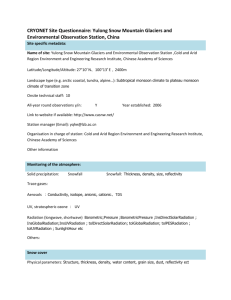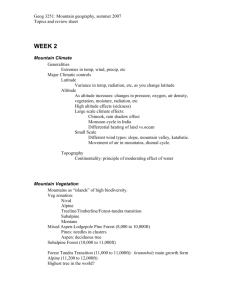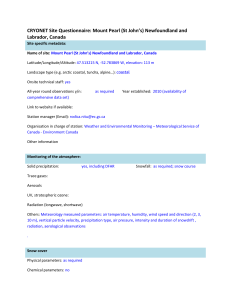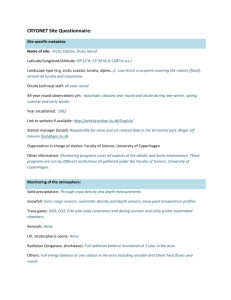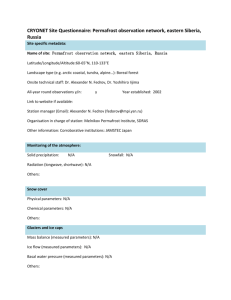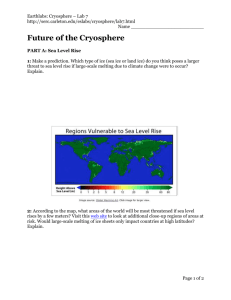International Workshop on Cryosphere and Hazards for the Hindu
advertisement
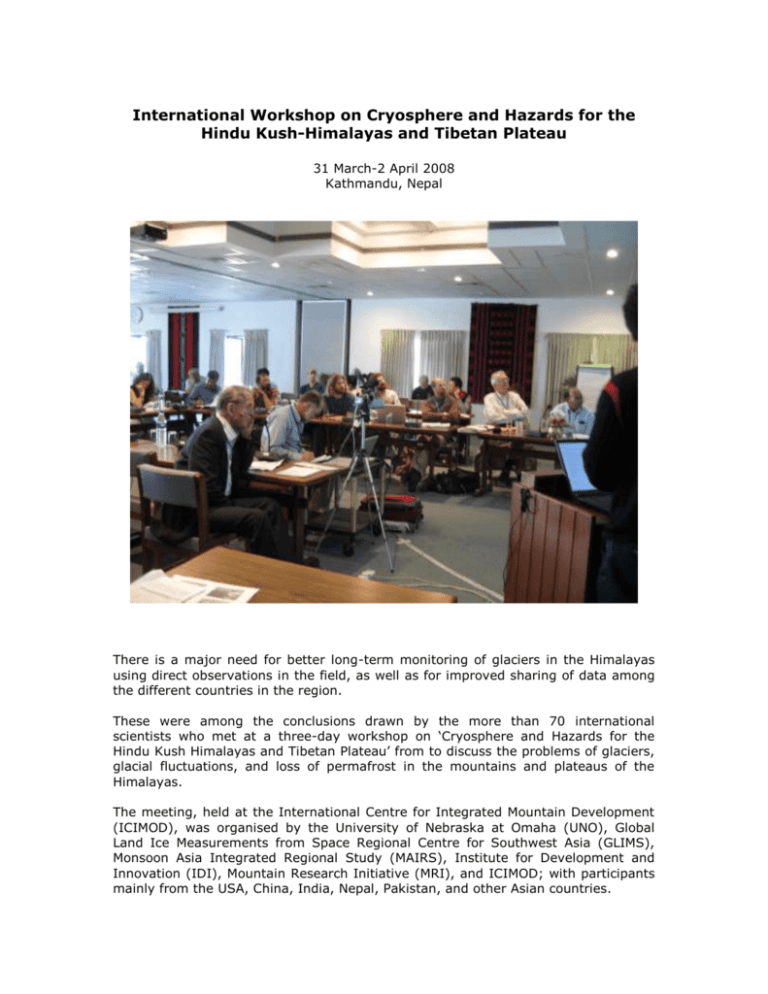
International Workshop on Cryosphere and Hazards for the Hindu Kush-Himalayas and Tibetan Plateau 31 March-2 April 2008 Kathmandu, Nepal There is a major need for better long-term monitoring of glaciers in the Himalayas using direct observations in the field, as well as for improved sharing of data among the different countries in the region. These were among the conclusions drawn by the more than 70 international scientists who met at a three-day workshop on ‘Cryosphere and Hazards for the Hindu Kush Himalayas and Tibetan Plateau’ from to discuss the problems of glaciers, glacial fluctuations, and loss of permafrost in the mountains and plateaus of the Himalayas. The meeting, held at the International Centre for Integrated Mountain Development (ICIMOD), was organised by the University of Nebraska at Omaha (UNO), Global Land Ice Measurements from Space Regional Centre for Southwest Asia (GLIMS), Monsoon Asia Integrated Regional Study (MAIRS), Institute for Development and Innovation (IDI), Mountain Research Initiative (MRI), and ICIMOD; with participants mainly from the USA, China, India, Nepal, Pakistan, and other Asian countries. The event was designed to engage scientists in cross-border scientific dialogue about the problems and possibilities associated with snow and ice in the Himalayas and Tibetan Plateau. The workshop brought together the best geoscience expertise available for the region. Experts brainstormed on new ideas and procedures for obtaining information about the status and trends of snow and ice resources in this extended mountain area. The massive stores of water in the region in the form of snow and ice have given it the nicknames of ‘Water Tower of Asia’ and the ‘Third Pole’ -- the largest ice reserves in the world outside of the Arctic and Antarctic. However, these snow and ice resources are undergoing rapid changes that are generally attributed to climate change and could have a major impact on the lives and livelihoods of millions of people in the region and the river basins downstream. This mass of snow and ice also plays an important role in determining the global climate. Solid scientific understanding of the processes taking place is essential for future planning, and this workshop helped bring together the knowledge that is available, and also to highlight the gaps. The six-point conclusion of the workshop urged the governments of the Himalayan countries to facilitate data generation and sharing, and to identify at least one model glacier in each country for long-term field-based study. A standard method should be developed and used for monitoring and assessing glaciers across the region to facilitate comparative analysis. Development of basin-wide water scenarios should be encouraged for all major water basins in the region. Scientists needed to be educated and trained on emerging technologies and a database developed on glaciological data resources.

